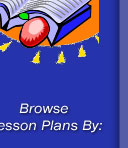|
|
 |  |  |  |  |  |  |  |  |  |  |  |  |  |
Literature Connection:
BATS on Parade by Kathi Appelt
Mathematical strand:
Algebra and Patterns
Topic:
Correctly express and interpret mathematical facts, concepts, and procedures in symbolic, verbal and graphical form. Use a table to organize information.
Grade level:
6-8
Lesson Created by:
Marie Green, Susan B. Anthony Middle School, Manhattan, KS.
Lesson Description:
Materials
- Book Bats on Parade by Kathi Appelt, grid paper
1. Launching the lesson (engage):
- Read the book
- Talk about what was special about each entry in the parade, have the student show what the 1st -10th entries in the parade would look like by shading the appropriate number of squares on the grid paper
2. Developing the lesson
- Have students make the next size entry for the parade on their grid paper.
- Now introduce the terms: square, square root, and perfect square.
- Each student is to tell a number that could be an entry in the parade.
- Have each tell a number that could not be an entry in the parade
- Make a chart of the following: position in parade # of bats in the entry
|
Position in Parade -----------------Number of bats in the Entry
1 ----------------------------------------1
2---------------------------------------- 4
3 ----------------------------------------9
4 ----------------------------------------16
|
- Discuss the numbers that can be entries and those that cannot.
- Once again discuss a pattern, suppose there was an entry in the nth position. How many bats would be in that entry?
3. Closure/Discussion/Elaboration
- Pose the question: What kind of numbers are the numbers of bats in the entry?
- Students are to determine if the gym class of 91 students could be an entry in the parade and use all students? Why or Why not? Could they have their own parade and use all students, if so how many entries could they have in their parade? (Further questions: If we want to use all students or as many as possible in a class of 27, what position in the parade will they have? If we want to use all students, or as many as possible, in a school of 510, what is the position they will have?) Suppose you only have 27 to use for your entire parade, how many entries can you have? Suppose you have 510 for your entire parade, how many entries can you have?
- Explain your work and your thinking.
- Extension: Look at the set of numbers 1, 4, 9,16, etc. Find another way to get the numbers in this set. Now find the sum of the first 5 odd numbers. What if I wanted to know the sum of the first n odd numbers?
|
|  |  |  |  |  |  |  |  |  |  |  |  |  |  |  | |  |  |  |  |  |  |  |  |  |  |  |  |  |  |  |  |  |  |  |  |  |  |  |  |  |  |  |  |  |  |  |  |  |  |  |  |  |  |  |  |  |  |  |  |  |  |  |  |  |  |  |  |  |  |  |  |  | | |  |
|